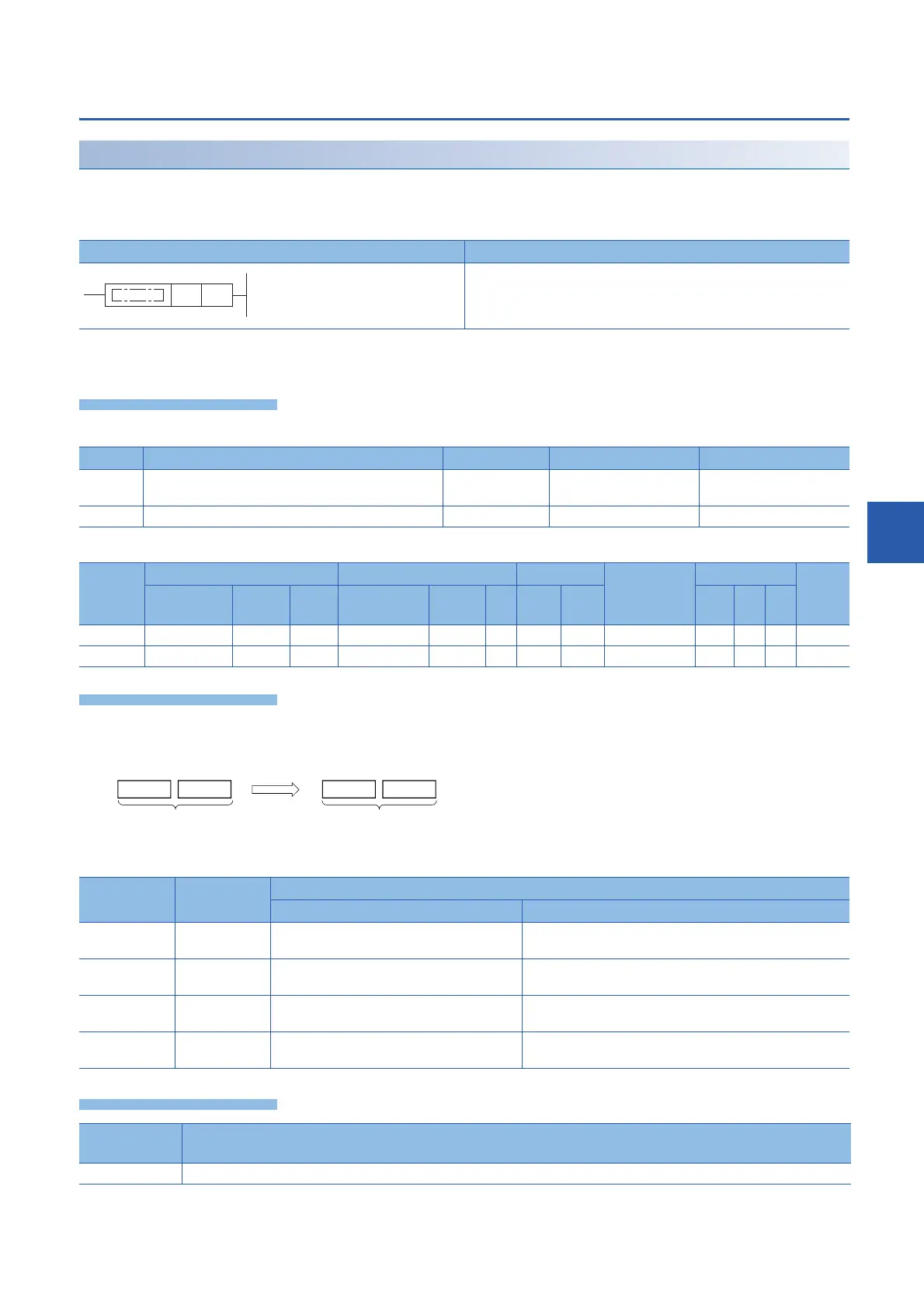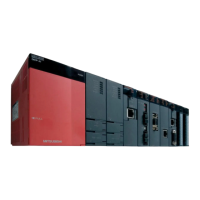7 APPLICATION INSTRUCTION
7.7 Real Number Instruction
449
7
Calculating the arc tangent of single-precision real number
ATAN(P)/DATAN(P)
These instructions calculate the angle from the tangent of the angle specified by (s), and store the operation result in the word
device specified by (d).
The ATAN(P) instructions can also be used as DATAN(P).
*1 The ATAN instruction is not supported by the ST language. Use ATAN of the standard function.
Page 776 ATAN(_E)
■Descriptions, ranges, and data types
■Applicable devices
• These instructions calculate the angle from the tangent of the angle specified by (s), and store the operation result in the
device specified by (d).
• The angle (operation result) stored in (d) is expressed in radians (from -/2 to /2).
• The table below shows the related devices.
Ladder diagram Structured text
*1
ENO:=ATANP(EN,s,d);
Operand Description Range Data type Data type (label)
(s) A tangent value used in the TAN
-1
(arc tangent) operation or
head device number storing the tangent value
Single-precision real number Single-precision real number
(d) Head device number for storing the operation result -/2 to +/2 Single-precision real number Single-precision real number
Operand Bit Word Double word Indirect
specification
Constant Others
X, Y, M, L,
SM, F, B, SB
U\G T, ST,
C, LC
T, ST, C, D,
W, SD, SW, R
U\G Z LC LZ K, H E $
(s)
(d)
Device Name Description
Condition Operation
SM700 Carry The absolute value of the operation result 2
128
The value of (d) is the maximum value (2
128
) of 32-bit real
numbers and the carry flag SM700 turns on.
SM8020 Zero The operation result is true "0".
(The mantissa part is "0").
The zero flag SM8020 turns on.
SM8021 Borrow The absolute value of the operation result < 2
-126
The value of (d) is the minimum value (2
-126
) of 32-bit real
numbers and the borrow flag SM8021 turns on.
SM8022 Carry The absolute value of the operation result
2
128
The value of (d) is the maximum value (2
128
) of 32-bit real
numbers and the carry flag SM8022 turns on.
Error code
(SD0/SD8067)
Description
3402 The specified device value is -0, denormalized number, NaN (not a number), or .
(s)+1 (s) (d)+1 (d)
TAN
-1
( )
Single-precision real number Single-precision real number

